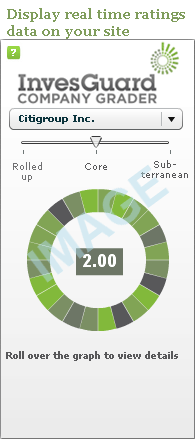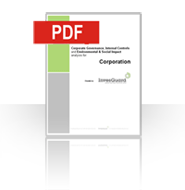January 11th, 2010
With all the bank compensation hoopla going on, I thought it would be a good idea to see where banks stood with their compensation figures for 2009.
It’s JP Morgan Chase for today.
Having exited the TARP program quite a while back, it has been free to independently determine its compensation amount and structure as compared to some of the other banks that took till the end of 2009 to do so.
Reviewing JP Morgan’s Form 10k for 9 months ended September 2009, showed markedly increased compensation expense as compared to the same period in 2008. Compensation expense for this 9 month period stood at $ 21816 million as compared to $ 17722 million in 2008. JP Morgan attributes this increase of 23% to the takeover of Washington Mutual and an increase in performance based compensation.
In JP Morgan’s Investment Bank, compensation for the 9 months ended September 2009 has also increased from $6535 million to $ 8785 million. Investment bank compensation increase constitutes almost 55% of the total compensation increase during the 9 months of 2009. Also, investment bank compensation as a percentage of its total revenue for the 9 months ended Sept 2009 stood at 37% a steep drop from 53% for the same period in 2008……probably a good thing too.
JP Morgan appears unperturbed by Goldman Sachs and Morgan Stanley announcing their new stock based bonus plans for top executives. Stock based compensation as per JP Morgan’s 10K stands at $ 2435 million, a modest increase from $ 2085 million for 2008. Any increase here could be considered a step in the right direction.
CEO James Dimon like Goldman’s Blankfein will continue to receive a salary and a bonus (though bonus in all probability will not be in pure stock). With the entire investor world and Main Street USA focused on bank compensation, it should be interesting to watch how these banks balance to keep their employees happy while warding off public focus.
please wait...
Rating: 0.0/5 (0 votes cast)
Tags: bankers pay
Posted in JP Morgan Chase, company | No Comments »
November 27th, 2009
“The time has come,” the Walrus said,
“To talk of many things:
Of shoes–and ships–and sealing-wax–
Of cabbages–and kings–
And why the sea is boiling hot–
And whether pigs have wings.”
- From The Walrus and the Carpenter by Lewis Carroll.
Hopefully, the ongoing discussion and consequent recommendations by U.K. City Banker Sir David Walker will not dissolve into a hypothetical discussion like the one by Lewis Carroll’s The Walrus and the Carpenter.
The final recommendations by Sir David Walker on the state of corporate governance, particularly for banks in the U.K. was made public yesterday.
The big focus was on Board Committees and particularly the role that the board should play in the risk assessment and management process of the company. As the report puts it, boards have been discharging their risk related duties with a sense of ‘disclosure fatigue’ –full disclosure is the best way to fulfill risk related obligations by the board. In reality, boards should ensure that risks are identified in a timely manner, assessed and controlled effectively. Suitability and relevance of experience of such Board level Risk Committee members has also been examined in this report.
In addition, the Board Risk Committee should file a separate Risk Report, within the Annual Report. The report should describe thematically the strategy of the entity in a risk management context, including
1. information on the key risk exposures inherent in the strategy,
2. the associated risk appetite and tolerance and
3. how the actual risk appetite is assessed over time covering both banking and trading book exposures and
4. effectiveness of the risk management process over such exposures.
The report should also provide at least high-level information on the scope and outcome of the stress-testing program. An indication should be given of the membership of the committee, of the
frequency of its meetings, whether external advice was taken and, if so, its source.
This Risk Report recommendation while good in theory may not necessarily achieve the objective. If you look at the kind of information that a typical Audit Committee report discloses, you will see what I am talking about. Other than 98% being ‘CYA’ statements, there is barely any useful information.
Sir Walker’s report also comments on other broader corporate governance measures such as stock ownership requirements for executive management.
As far as pay related regulation goes, deferral of incentive payments was the primary ‘form of attack’ with one half of variable remuneration being offered in the form of performance based long term incentives.
As per the recommendations, half of this award should be handed out only after 3 years and the remainder after 5 years. Short term bonus awards to be paid over a three year period.
At InvesGuard, we have been actively mining information on exactly this type of information. For all the banking companies in our database, we have gathered information on the presence of Board level risk committees, suitability and relevance of experience for these Committee members. We also track changes to Chief Risk Officers at Banking companies.
Register today to view Companies in our database.
please wait...
Rating: 0.0/5 (0 votes cast)
Tags: bankers pay, Pay regulation
Posted in Board Committees, Corporate Governance, Pay regulation, Risk Management Board Committee | No Comments »





